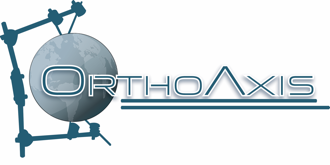Product Overview
The NCB (Non-Contact Bridging) Large Fragment System is a line of polyaxial locking plates for the treatment of femur, tibia and humerus shaft fractures. It consists of a Curved Femur Shaft plate and a Straight Narrow Shaft Plate. The NCB Curved Femur Shaft Plate is also included in the NCB Periprosthetic Femur Polyaxial Locking Plate System.
• Symmetric Design
There is only one plate for left and right long bones due to symmetric design. The NCB Straight Narrow Shaft Plate can either be used for the tibia or humerus. Whereas the NCB Curved Femur Shaft Plate is specifically designed for the femur.
• K-Wire Holes
Two k-wire holes at each end of the plate allow easier preliminary plate fixation.
• Compression Slots
Two compression slots allow 1mm of compression each.
• Polyaxiality
The NCB Plate Technology allows polyaxial screw placement (30° cone) with screw locking achieved through the use of locking caps that are threaded into the plate holes. The locking construct improves stability especially in poor bone quality.
• Non-Contact Bridging
In the locked mode the NCB Large Fragment Plate acts as an internal fixator without contact between the plate and the bone surface, which may reduce the risk of impairment to the periosteal blood supply. This Non-Contact Bridging concept can also be controlled through the use of 1, 2 or 3mm spacers, which are threaded into the plate holes prior to plate insertion.
• Broad Screw Options
Three different NCB Screw types are offered with the NCB Large Fragment Plates, to allow both bicortical and unicortical fixation.
• Cable Fixation Options
The products from the Zimmer ® Cable-Ready ® Cable Grip System are compatible with the NCB Large Fragment System.
• Flexibility
The NCB Straight Narrow Shaft Plate and the NCB Curved Femur Shaft Plate can be implanted using the following existing instrument sets: NCB Curved Femur Shaft Plate
• Symmetric Design
There is only one plate for left and right femurs due to symmetric design.
• Compression Slots
Two compression slots allow 1mm of compression each.
• Articulated Tension Device Holes
One hole at each end of the plate allows for connection of the Articulated Tension Device to achieve additional compression, if needed. (https://www.zimmerbiomet.com/)







